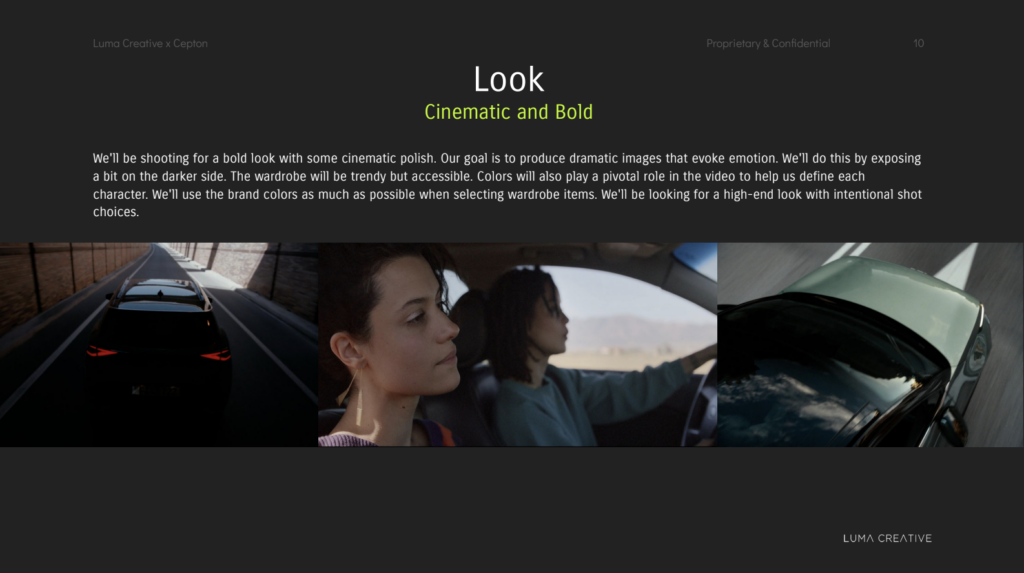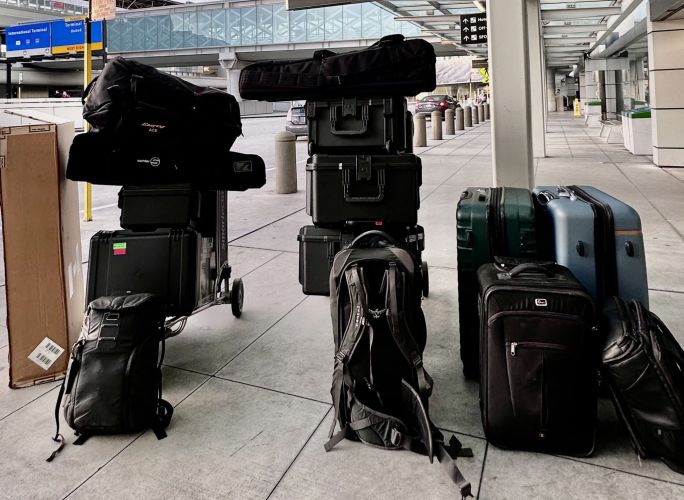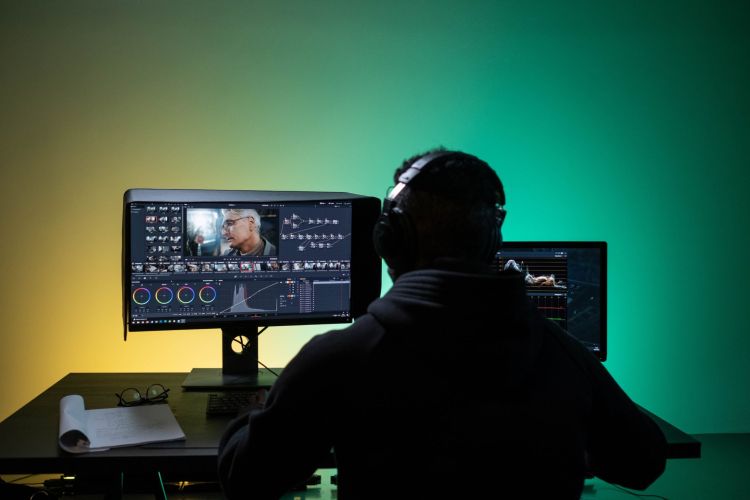
How to create a director’s treatment
Table of Contents
As a production company in San Francisco, we make all types of videos. We shoot events, explainers, interviews, commercials, and everything in between. Every job is different. We often work directly with clients or under an agency. The main difference is oftentimes who takes care of the initial creative. Has the agency been working with the client for many months to hone their messaging, or do they need our creative support? If we are responsible for the creative, then oftentimes, after pitching the initial idea, our director will create a director’s treatment. When we first started, we asked ourselves, “How to create a director’s treatment”?
When we first started, we found the idea of a director’s treatment quite intimidating. What are they, and when should we make one? Surely, we didn’t need to send it to every client! After much research and many times making them, we think we’ve finally got a handle on them. In this article, we’ll break down how to create a director’s treatment.
What is a director’s treatment?
A director’s treatment is a visual document comprised of words, photos, or GIFs that describe a story. It is typically broken down into sections, including, but not limited to, the intro, story, characters, look, wardrobe, production design, editing, sound design, and conclusion. According to Thefutur.com, “The director’s treatment is an important tool in the pre-production process to give potential clients a clear roadmap of what to expect from the final video.”
When should you write a director’s treatment?
Let’s say your client comes to you wanting to shoot a commercial for a new coffee mug. They tell you their idea and ask you to pitch them yours. Sure, you could just describe it to them, but would they really be able to see your story come to life? As creatives, we often have a very visual mind, but it’s important to visually convey that story for everyone on the client’s team to see.
It is much more cost effective for you to make a treatment before shooting instead of shooting and editing only for the client not to like the visual direction. Maybe it was too light and bright for their taste, or the locations just didn’t fit their brand. Each section you write gives a conversation starter so you can express your ideas and have a jumping-off point.
Are they top secret?
Many directors feel that their secret to winning jobs is in their treatments. This could be due to their ability to resonate with the client’s vision or their ability to articulate themselves via text and images. It’s important as a director to find your own voice. It can take time, but through repetition, you’ll start to get a rhythm for what works for you and your clients. Sure, looking at examples can give you some ideas, but it may actually end up stifling your creativity in the long run!
Key sections explained
Intro: This is where you should introduce yourself and relate to the project. How can you connect with the mission or product? How can you elevate this video?
Story: After taking a look at their story, how can you elevate it? Do you go bold and take it another direction? Or do you play it safe and just make a few small tweaks? We’ve had success with both approaches. It can be helpful to ask how bold they’d like you to be before writing something. Maybe they already have the idea and just want it polished? Other times, they may just have a seed of an idea and really want it fleshed out. Either way, this is where you’ll write out the core storyline.
Characters: Who are the key characters in your story? How can you give them a personality that comes to life? It can be helpful to describe their ethnicity, age, hobbies, and background. It might also be helpful to note that a location or non-living thing can sometimes be a character.
Look: How is this piece going to feel? Is it dark and moody? Light and bright? What aspect ratio are you looking to use? Are you going to shoot anamorphic? Use this section to describe and show what they should expect with the images you will capture. This would also be a good place to mention your Director of photography and any relevant work.

Wardrobe: What do you imagine your characters wearing? Can you draw on references from any other movies, periods of history, or styles?
Production design: How will the worlds you create look? Once again, try to use as much visual language as possible. If you were to read this to somebody else with their eyes closed, could you put them in the world? What would they be seeing? What would be in the scenes?
Editing: Editing is critically important to have a story turn out. What kind of editing will you use to make this story flow? Will you use chronological editing? Will you use time-shifting? Should it be paced fast or slow? Will you linger on certain moments more than others? Asking yourself these key questions can help you decide what the editing will add to the story.
Sound design: Not all videos have sound design, but from our perspective, sound is one of the most overlooked elements of a good story. They can play up subtle moments or give the viewer extra motion. What kind of music will be playing? Will there be any music at all? Will there be sound effects or any sort of Foley to bring it to life?
Conclusion: Thank your readers for reading your treatment. Leave them feeling inspired and ready to get started! You’ve just learned the last step of creating a director’s treatment.
Where to find reference images?
You might think that once you are done writing your treatment, you are done. However, that is far from the case. You should be spending just as long looking for reference images as you should writing your treatment. At first, this section can seem overwhelming and daunting, but it truly is the most important part. Likely, you are not re-creating the wheel and can find images that look somewhat like what you are trying to describe in your writing.
In the past five years, many websites have been released where you can find cinematic-looking images, whether those are from previous commercials or feature films. A few of our favorite websites to look for images on are Shotdeck, Film Grab, and Film.AI. Another helpful place is to look at other directors or DP’s Vimeos. Try looking at what they like and see if you can find something you resonate with for your story. Lastly, try looking at other brands’ commercials in similar spaces to see if you can find what you are looking for.
Conclusion
Thanks for taking the time to read our article on creating a director’s treatment. Hopefully, it has been helpful and will take your treatments to the next level. If you are looking for a San Francisco video production company, reach out to us today!

William Cook
William founded Luma Creative to bring elevated, story-driven video production to corporate, tech, and nonprofit clients in San Francisco. With over a decade of directing experience across commercial, corporate, and other video projects, he leads with calm under pressure, sharp creative instincts, and a client-first mindset.

